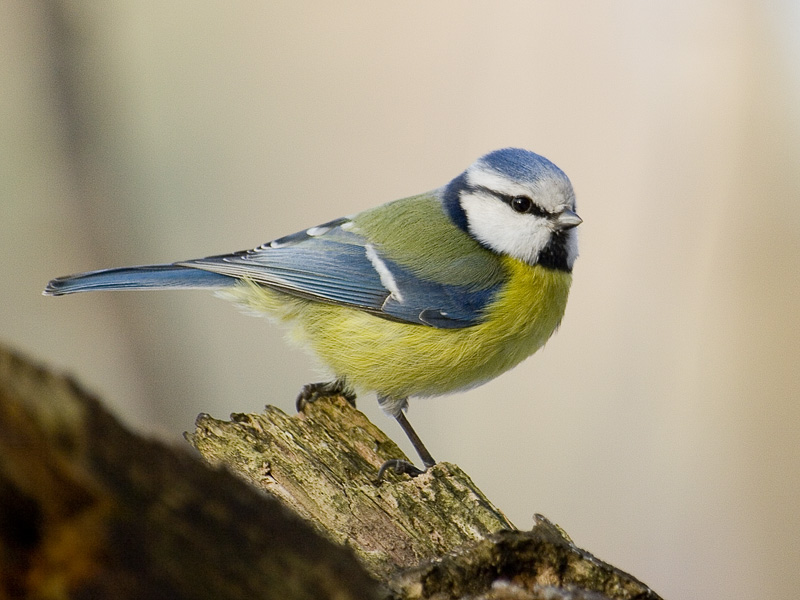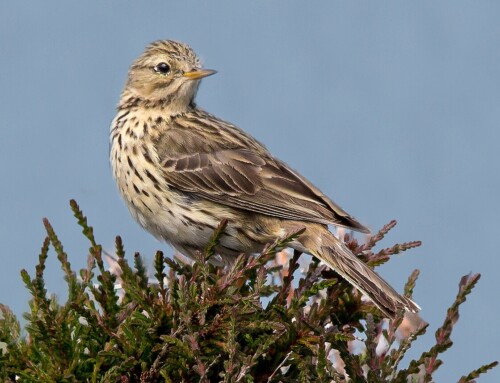
LINKED PAPER
An experimental study of trade-offs between brood size and moult in the blue tit (Cyanistes caeruleus). Engebretsen, S. I., & Slagsvold, T. 2023. IBIS. DOI: 10.1111/ibi.13172. VIEW
Life-history trade-offs are an ever-present feature in the natural world, with individuals having to balance their resources between different activities. While the trade-offs between reproduction and survival in birds have generally been well-studied, one trade-off which has received relatively less research effort is that between reproduction and moult.
In a recent study in Ibis, Stein Engebretsen and Tore Slagsvold experimentally manipulated the brood size of a population of Blue Tits (Cyanistes caeruleus) to investigate whether parental energy expenditure during reproduction affected the timing of moult of primary feathers.
Breeding vs. moulting
The energy-demanding activities of breeding and moult have traditionally been considered to be mutually exclusive (Payne 1972). Most temperate altricial species renew their plumage at least once a year (Jenni & Winkler 1994), with moulting usually taking place after breeding when resources are still abundant and parental duties are limited. However, overlaps between breeding and moult have been recorded in over 100 species. It has also been shown that passerine males commonly begin to moult before females, with a potential sexual conflict arising if moulting results in reduced parental effort.
In this study, Blue Tit broods were manipulated to be small (two nestlings) or large (9-12 nestlings), and the degree of moulting from the parents was measured at both 7 and 14 days after hatching to determine the impact of brood demands on both the initiation and speed of moult.

Figure 1. Mean (+1 se) moult score of male Blue Tits attending small (filled bars) and large broods (open bars) when caught 7 and 14 days after hatching. Sample sizes are shown above bars..
Sex differences in moult schedules
In the studied population, results showed that brood reduction had an effect on moult in male parents but not in females. Males with small broods exhibited an earlier onset and greater rate of moult than those with large broods. Despite this, there was no apparent impact of moulting on food provisioning in males relative to females. There was also no evidence of a relationship between male moult and age, body size, or hatching time of the brood. However, both males and females rearing small broods were in better body condition that those rearing large broods.
As has been found in many passerines, male Blue Tits initiated moult before females, with none of the females in this population initiating moult by day 7 after hatching and only two by day 14. One explanation for this sex difference is that females may be more energetically constrained than males early in the breeding period due to the efforts of nest-building, egg-formation, and incubation and brooding (Walsberg 1983). Another explanation is that males may value broods less than females due to extra-pair copulations resulting in uncertainty around paternity (e.g. Møller & Birkhead 1993). However, this is contradicted by the finding that males’ earlier onset of moult does not appear to impact their food provisioning and hence they seem to invest heavily in the brood. Finally, the males may be responding to the reduced need to provision a small brood by starting to moult while still breeding, increasing their chances of survival. For example, by finishing moulting earlier they may be better prepared to compete with other males for territories in the autumn.
This results of this study provide further evidence of life-history trade-offs between reproduction and self-maintenance in birds, supporting previous studies and adding the novel result that breeding demands can affect the speed of moult as well as its onset.
References
Jenni, L. & Winkler, R. (1994). Moult and Ageing of European Passerines, 2nd edition. London, UK: Helm.
Møller, A.P. & Birkhead, T.R. (1993). Certainty of paternity covaries with paternal care in birds. Behavioral Ecology and Sociobiology 33: 261-268. VIEW
Payne, R.B. (1972). Mechanism and control of molt. In Farner, D.S. & King, J.R. (eds) Avian Biology, Vol. II: 103–155. London, UK: Academic Press. VIEW
Walsberg, G.E. (1983). Avian ecological energetics. In Farner, D.S. & King, J.R. (eds) Avian Biology, Vol. VII: 161–220. New York, NY, USA: Academic Press. VIEW
Image credits
Top right: Blue Tit (Cyanistes caeruleus) | Sławek Staszczuk | CC BY-SA 3.0 Wikimedia Commons
Blog posts express the views of the individual author(s) and not those of the BOU.
If you want to write about your research in #theBOUblog, then please see here




